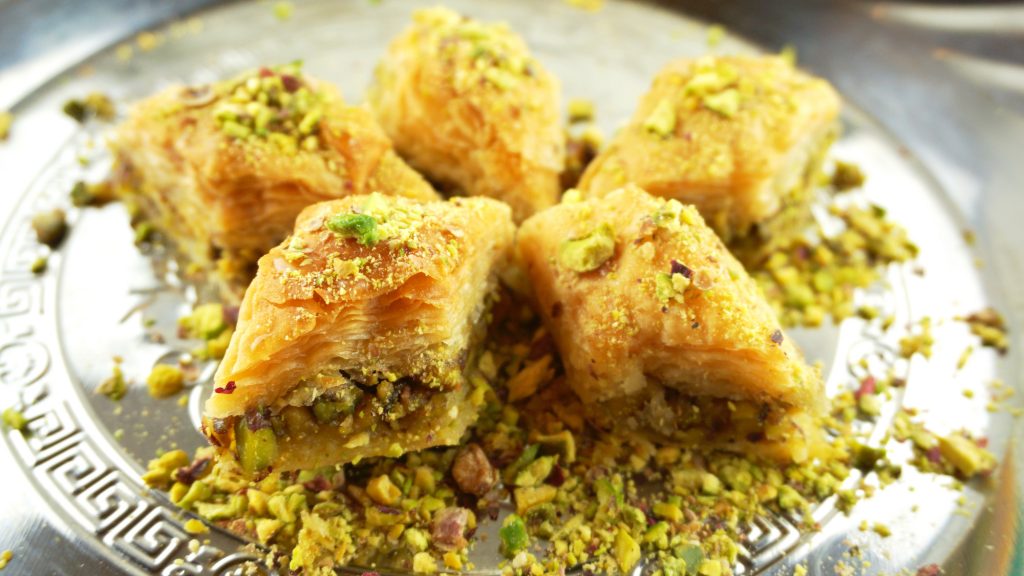Yasemen Kaner-White offers the perfect guide to ‘eating your way through the streets of Antep’, as it is often called, where Anatolian, Middle Eastern and Mediterranean flavours come together in a divine array of dishes.
Gourmet travel is becoming an increasingly popular pastime. People understand that to get under the skin of any culture, the local cuisine can lead the way. Everything, from special-occasion meals to customs around eating, traditional mealtimes and roadside snacks can uncover a country and its inhabitants’ paradigms.
Having recently spent a few days in Istanbul, a curious culinary basket of East meets West, I decided on a last-minute jaunt to a place I’ve long wanted to go, mainly for its authentic food: Gaziantep, Southeast Turkey. Ninety minutes flying from Istanbul and you are in the home of the best baklava in the world. This sweet layered filo and pistachio pastry treat uses just a few ingredients, hence why it is imperative that they are all of the finest quality.
“90 minutes flying from Istanbul & you are in the home of the best baklava in the world”
Gaziantep benefits from local fertile soil and prolific sunshine where cattle graze, producing beyond-compare butter, first-class flour and of course the perfect pistachios. The pistachios are picked slightly under-ripe towards the end of July to maintain their powerful flavour and deep green hue. Indigenous volcanic rock lines the oak wood-fuelled oven to bake the baklava to perfection. When visiting the oldest baklava shop in Gaziantep Güllüoğlu, dating from 1871, I met the owner, who took me on a crash course of how to eat it. Taking your middle finger and thumb, turn the baklava upside down, the base should be shiny and bright denoting its freshness, turn to the side and you should see multiple thin layers of filo sandwiching the bright green of the pistachio. Lastly there should be a definite crunch sound when you bite into it; unsurprisingly, his baklava passed with flying colours.
The delightful mix can be eaten in a host of shapes too: try Burmali Kadayıf, made with thin strands of dough and of course, pistachio. To find baklava in London made the Gaziantep way, only much kinder on your waistline (less sugar and dough), I’d recommend the ones created by nutritionist Turkish chef Huseyin Ozer at his Sofra restaurants.
Another local speciality and traditional breakfast item is katmer – tantalising thin layers of dough encasing thick cream and pistachio: it is customary for a groom to send some to his bride’s family the day after the wedding, to show his happiness.
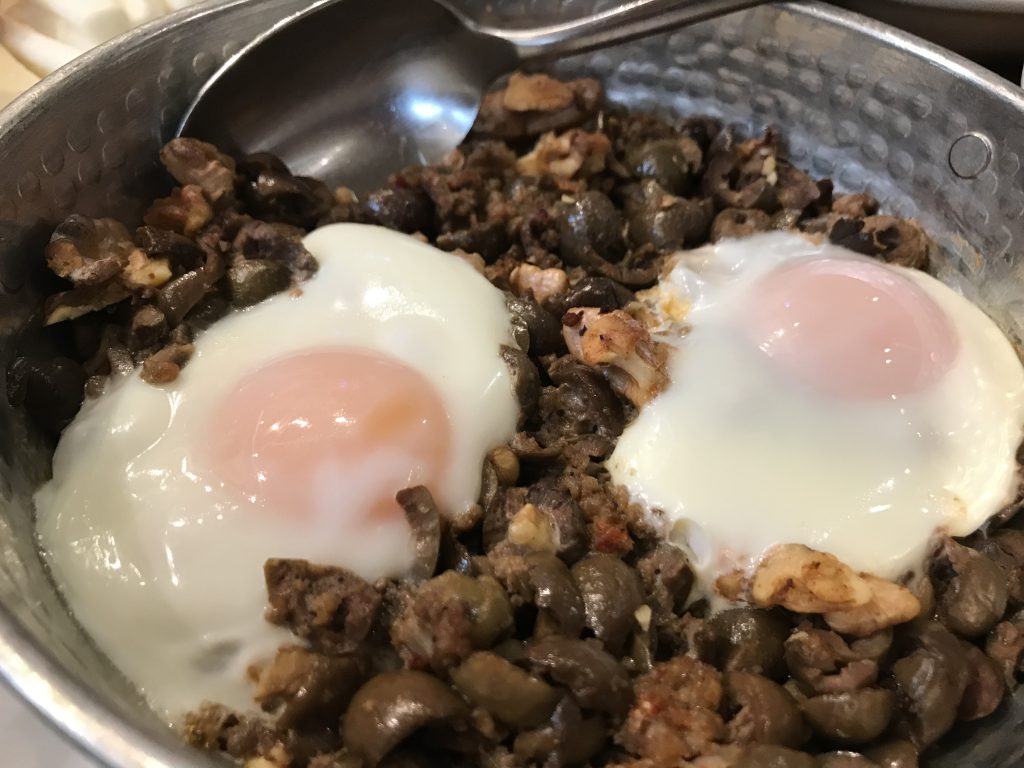
Breakfast in Antep is a feast in every sense: go to Orkide Pastanesi to watch the katmerbeing made and then freshly brought to the table. Try their homemade preserves from rose to sweet thick cut courgette, a selection of cheese, from hellim to crumbled beyaz penir (aka feta), fresh black and green olives, honey, simit bread, various pulses with olive oil and parsley, cheese-filled böreks and perhaps my favourite, Zeytinli Mıhlama (mikla), a green olive and egg dish.
Mikla is an old Turkic name meaning cast iron skillet, which is where the dish’s name derives and in which it is cooked. Stone-crushed green olives cured in brine are soaked to remove the salt, chopped and fried in butter with onion and topped with eggs cracked over the top, which gently cook through with the heat of the olives: simply delicious. Other mikla varieties include mincemeat, mushrooms and truffles. Don’t miss out on the Sahan Kaymağı– the thick creamy ‘skin’ formed on top of a pan of hot milk. Traditionally, a thin flatbread is laid on top, and then removed, taking the creamy skin layer with it, then drizzled with honey and eaten. In Orkide they sprinkle a good helping of pistachio on top too.
After such a hearty breakfast, a lighter lunch is called for and Löküs Ciğerserves a mean lamb liver wrap: delicate cubes of delicious lamb liver, salt, cumin, parsley, red pepper flakes and sliced raw onion encased in a soft wheat wrap certainly hit the spot. Wash down with ayran, a refreshing Turkish yogurt drink.
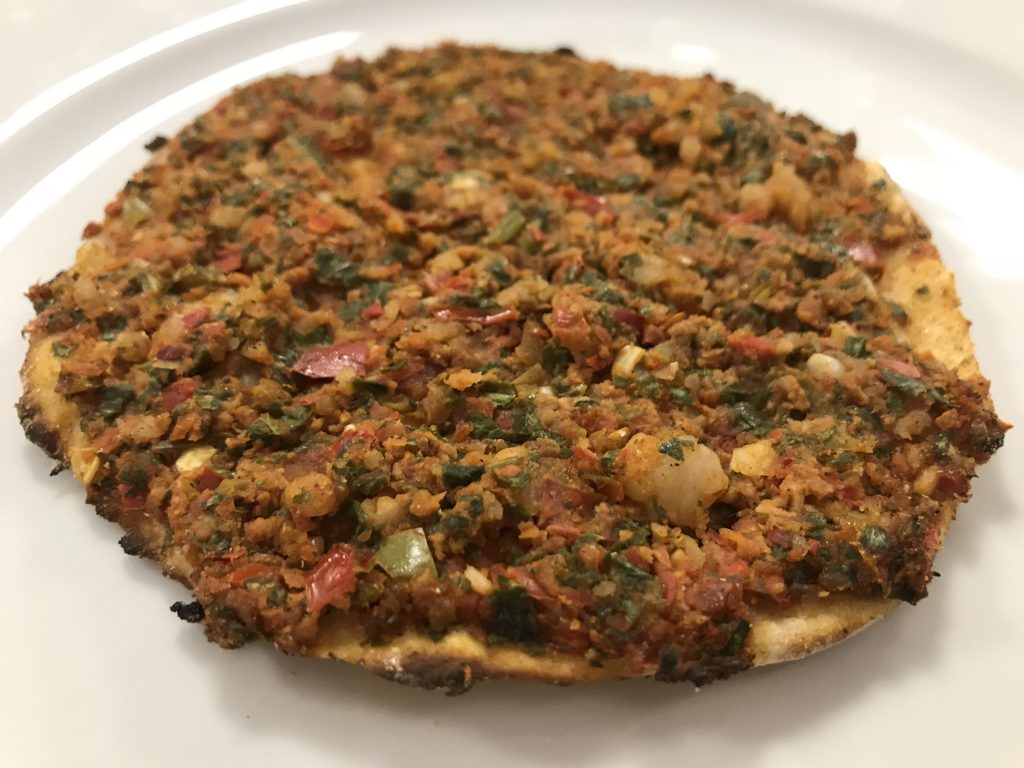
Yogurt features heavily in Gaziantep, with Yuvalama, a dish served during Şeker Bayramı (the three-day festival after Ramazan) being one of its most iconic dishes. This tangy yogurt-enriched stew is a medley of chickpeas, cubed lamb, miniature mincemeat and ground rice meatballs (smaller than a chickpea), topped with melted butter and dried mint. The dish and its provenance are so special to Antep that since 2016 Yuvalama is officially labelled an Antebi dish, after gaining Protected Designation of Origin status. Talking of official recognition, in 2015 Gaziantep was given the title of Gastronomy City and is included in the UNESCO Creative City Network list.
Other than eating your way through the streets of Antep, you can soak in some kitchen knowledge at their fascinating Kitchen Museum. Also close by is the Hamam Museum where you can make a mini natural soap to take home on the way out. Go to the Zeugma Mosaic Museum to see the many mosaics excavated from the ancient Roman city of Zeugma. Its ‘Gypsy Girl’ mosaic is akin to theMona Lisa, with eyes that seem to follow you no matter where you are in the room, bringing people from far and wide to gaze upon her stare.
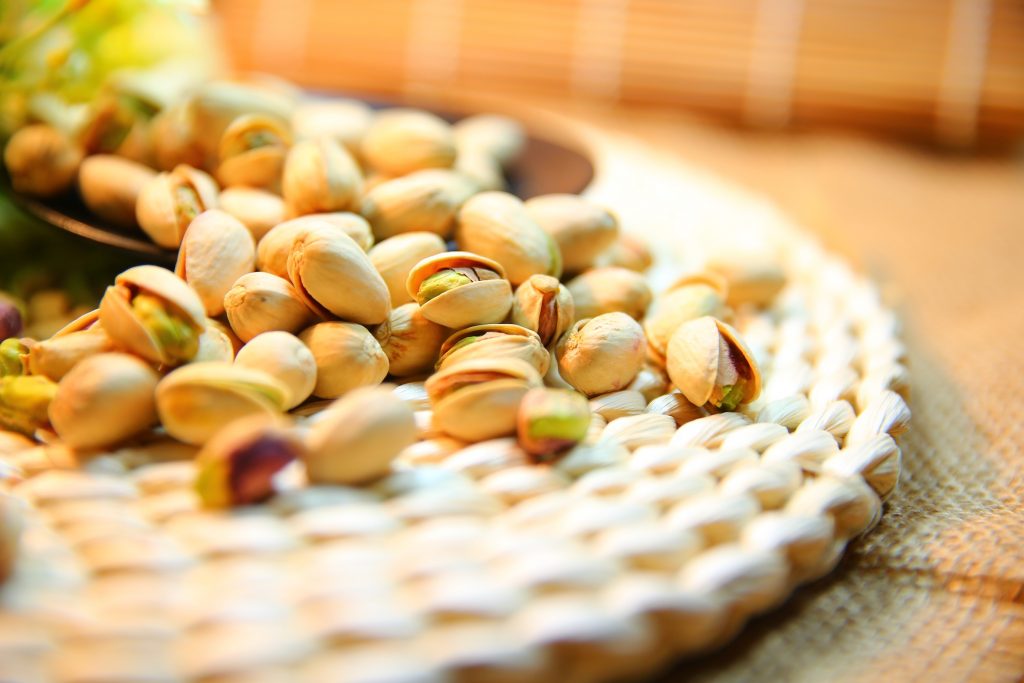
Have a wander through the bazaar to pick up local spice mixes: Zatar, dried aubergine shells ready for stuffing, sundried tomato or pepper pastes (salça) and of course a kilo or two of pistachios. Aylin Öney Tan, author of A Taste Of Sun & Fire (the book on Antep cuisine to own) talked me through the various types on offer: “The Siirt variety of pistachio is close to the Iranian pistachio, more for snacks and wonderful with whisky. The Şam Fıstığı, which are not salted or roasted and picked underripe, are used in sweets, the salted and roasted are less expensive and with shells even more so, perfect for snacking”.
I must say I prefer them with shells: there is something satisfying about de-shelling a pile of pistachios and consuming these moreish nuts. Soon a pistachio museum will open to boot.
“Zeugma Mosaic Museum’s ‘Gypsy Girl’ mosaic is akin to Mona Lisa”
Beyran was a dish that stood out during my visit, a rich rice and garlicky lamb soup, perfect in the winter. The owner of Yesemek Restaurant told me he cooks the meat (taken from the shoulders and neck) with fat for 12 hours on a low heat, so it’s certainly not a quick meal, but as they say, ‘all good things are worth waiting for’. It’s even easier to buy one pre-prepared!
The close proximity of Syria means there is an influence from their rich cuisine and to this day, one of my most memorable meals was one I ate in Syria: a kibbeh (meatballs) and quince stew. The sweet and savoury juxtaposition was delectable. Similar dishes can be found in Antep, even meatballs with cherries.
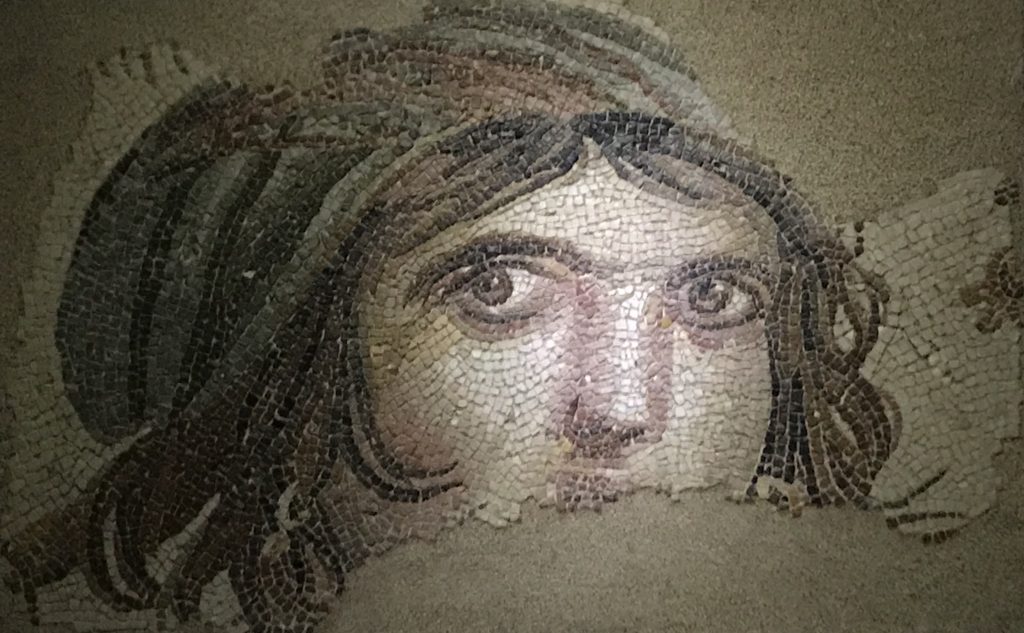
The historical blend of Anatolian, Middle Eastern and Mediterranean flavours has produced this ever-so unctuous array of Antep dishes. According to Tan, “Gaziantep has at least 300 unique dishes to its name”, and which one you choose, depends on you. As the Head of the EU Delegation to Turkey, Ambassador Christian Berger says:“Gaziantep is always worth a visit, if only for a meal”, though you’ll probably find one meal won’t suffice!


